Deep in Vietnam’s northern highlands, where mist-shrouded mountains meet terraced rice fields, stands a testament to wealth, power, and cultural fusion. The Vuong Family Mansion, often called the “Palace of the Hmong King,” rises from the remote Sa Phin Valley like an unexpected dream. This remarkable 20th-century structure blends Chinese grandeur, Hmong traditions, and French colonial influences, creating one of Vietnam’s most fascinating historical sites. As Phieu Travel guides curious visitors through Ha Giang Province, this architectural marvel consistently stands out as a must-visit destination that tells the story of a remarkable family and their enduring legacy.
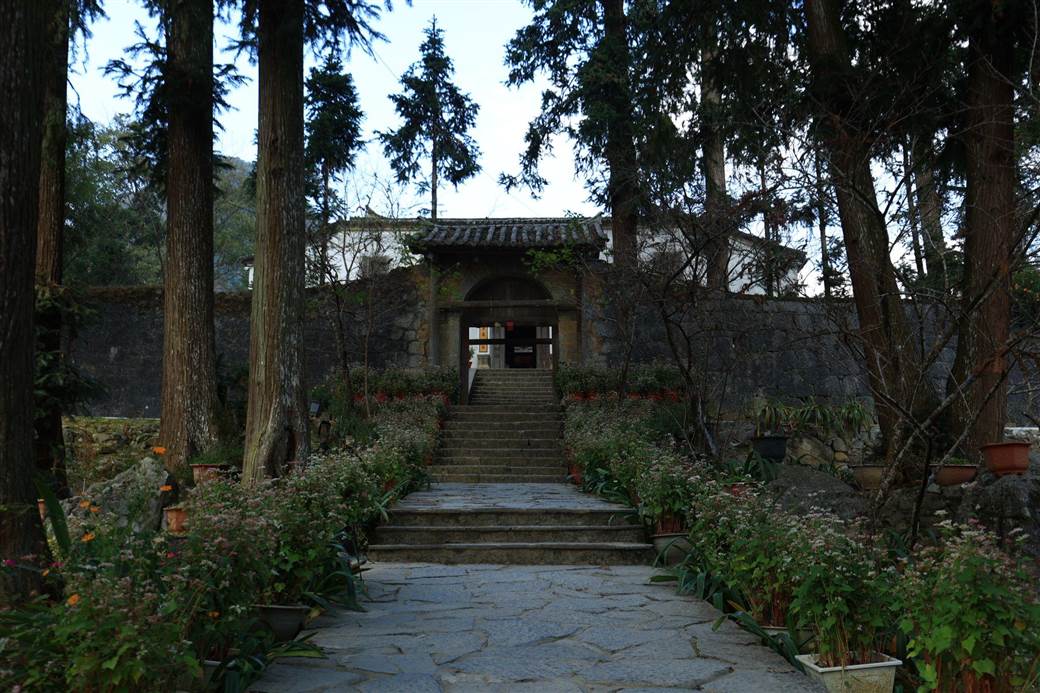
1. Introduction to Vuong Family Mansion
The Vuong Family Mansion represents far more than just an impressive building in a remote corner of Vietnam. Built between 1919 and 1928, this sprawling complex once served as the residence and headquarters of Vuong Chinh Duc, an influential Hmong leader who gained considerable power during the French colonial period. The mansion’s existence in such a remote location might seem surprising at first, but its strategic position and impressive design reflect the unique position its owner held in regional politics and trade.
Situated in Sa Phin Valley, about 14 kilometers from Dong Van district center and 43 kilometers from Meo Vac, the mansion occupies a carefully chosen site. The location provided natural protection among limestone peaks while maintaining access to major trade routes connecting Vietnam and China. Local legend suggests the site was selected following precise feng shui principles to ensure prosperity and protection for generations to come.
1.1 Historical Importance
The mansion’s historical significance cannot be overstated within the context of Vietnam’s northern highlands. Constructed at a time when French colonial influence was reshaping Vietnam, the building represents a fascinating example of cultural adaptation and resilience. Vuong Chinh Duc, commonly known as the “Hmong King,” held a special position as an intermediary between French authorities and local ethnic communities.
His family had accumulated significant wealth through various enterprises, including opium cultivation, which was legal and encouraged by colonial authorities at that time. The mansion’s scale and opulence directly reflected the family’s economic power and political connections. With the French establishing Duc as a regional administrator, he effectively controlled much of the borderland trade and local governance.
During its heyday, the mansion served multiple functions beyond a family residence. It operated as an administrative center, a defensive fortress, a trading hub, and a powerful symbol of authority in the region. Important decisions affecting thousands of people across the highlands were made within these walls.
1.2 The Hmong King and His Legacy
Vuong Chinh Duc’s story reads like a highland fairy tale, yet historical records confirm his remarkable rise to power. Born into a Hmong family of modest means, Duc demonstrated exceptional intelligence and ambition from an early age. Through shrewd business dealings and political maneuvering, he gradually expanded his influence across the mountainous regions of Ha Giang.
The French colonial administration, recognizing his capabilities and influence among local populations, appointed him as a regional governor. This unusual arrangement granted him considerable autonomy while serving French interests. Under this arrangement, his family prospered enormously, controlling trade routes and collecting taxes from surrounding areas.
Duc’s legacy extends beyond the magnificent mansion he built. He established schools, improved infrastructure, and mediated conflicts between different ethnic groups in the region. After his death in 1944, his son Vuong Chi Sinh inherited the mansion and continued the family’s leadership role until 1947, when political changes in Vietnam altered the family’s fortunes. Today, the Vuong family descendants no longer reside in the mansion, but they remain respected figures in local communities, and many still live in Sa Phin village.
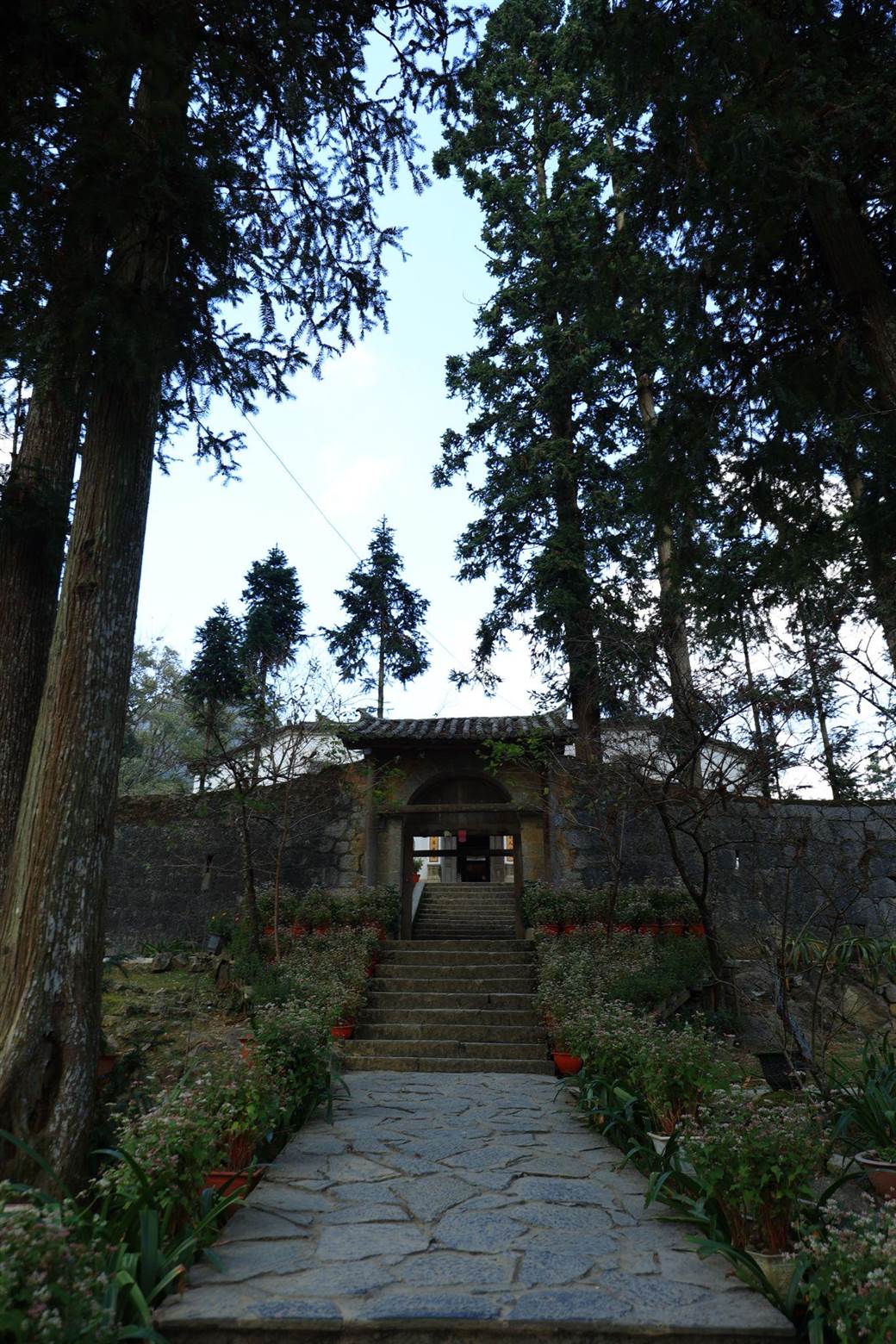
Ha Giang Jeep Tour by Phieu Travel: The Ultimate Adventure on the Ha Giang Loop (2025)
2. Architectural Styles and Materials
What makes the Vuong Mansion truly remarkable is its harmonious blending of diverse architectural influences into a cohesive whole. Standing before the mansion, visitors immediately notice elements that seem transported from different worlds yet somehow belong together in this remote mountain setting. The structure represents a masterful fusion of Chinese imperial design, traditional Hmong building techniques, and European sensibilities introduced through French colonial contact.
The mansion required nearly ten years to complete, with construction beginning in 1919 and finishing in 1928. Master craftsmen from China joined local Hmong builders, combining their expertise to create something truly unique. Materials were sourced both locally and from distant regions, demonstrating the family’s extensive trade connections and wealth.
The complex covers approximately 1,120 square meters and is surrounded by a formidable stone wall. From above, the mansion’s layout resembles the Chinese character “王” (wang), meaning “king” a deliberate choice that symbolized the family’s status and aspirations. This thoughtful arrangement reflects the careful planning that went into every aspect of the mansion’s design.
2.1 Fusion of Hmong, Chinese, and French Influences
The mansion’s architectural identity emerges from a fascinating blend of three distinct cultural traditions. The primary influence comes from Chinese imperial architecture, evident in the courtyard layout, the swooping roof lines with upturned corners, and the careful symmetry throughout the complex. These elements would have been familiar to Chinese merchants and officials who visited the mansion.
Traditional Hmong building wisdom appears in the use of local materials, adaptation to the mountainous terrain, and certain decorative motifs that held special meaning in Hmong culture. The mansion’s foundation and first floor utilize techniques perfected by Hmong builders over centuries of living in these highlands.
French colonial influence appears more subtly, primarily in certain interior arrangements, the inclusion of glass windows, and some decorative elements that would have been novel in this region. Unlike direct colonial architecture seen in urban centers, here the French influence manifests as a light touch, enhancing rather than dominating the overall design.
The mansion’s supporting pillars illustrate this cultural fusion perfectly. The 64 massive wooden columns throughout the structure follow Chinese design principles but incorporate Hmong decorative elements and were installed using techniques that reflected both traditions. These pillars remain one of the most impressive features for visitors today.
2.2 Symbolic Motifs and Decorations
Beyond its structural elements, the mansion speaks through an elaborate symbolic language carved into its very fabric. Intricate wooden carvings adorn doorways, window frames, and supporting beams throughout the complex. These are not merely decorative but convey specific meanings and aspirations important to the Vuong family.
Bat motifs appear frequently, representing good fortune and happiness in Chinese tradition. Dragons and phoenixes, symbols of imperial power, grace major entrances and central halls. Pine trees, bamboo, and plum blossoms collectively known as the “Three Friends of Winter” in Chinese culture appear in various carvings, representing resilience and integrity through difficult times.
Notably, many decorative elements incorporate poppy flowers, a direct reference to the source of the family’s wealth. Though controversial today, opium cultivation was central to the regional economy during this period, and the Vuong family made no effort to disguise this connection in their home’s decoration.
2.2.1 Sacred Animals and Propitious Signs
Throughout the mansion, visitors encounter a menagerie of symbolic animals that would have been immediately recognized by visitors of the era. Lions guard entrances, symbolizing protection and status. Cranes appear in peaceful garden scenes, representing longevity and wisdom. Fish, particularly carp, suggest abundance and prosperity.
The mansion’s wooden beams feature intricate carvings of bats (蝠 fú), whose name sounds identical to the word for blessing or good fortune (福 fú) in Chinese. This wordplay was intentional, invoking blessings upon the household through visual representation. Similarly, deer carvings play on the homophone for wealth and official salary in Chinese cultural understanding.
Eight trigrams from the I Ching (Book of Changes) appear in strategic locations throughout the mansion, particularly around entrances and in the central courtyard. These ancient Chinese symbols represent fundamental principles of reality and were believed to offer protection and balance to the household. Their placement followed precise feng shui guidelines to maximize positive energy flow through the complex.
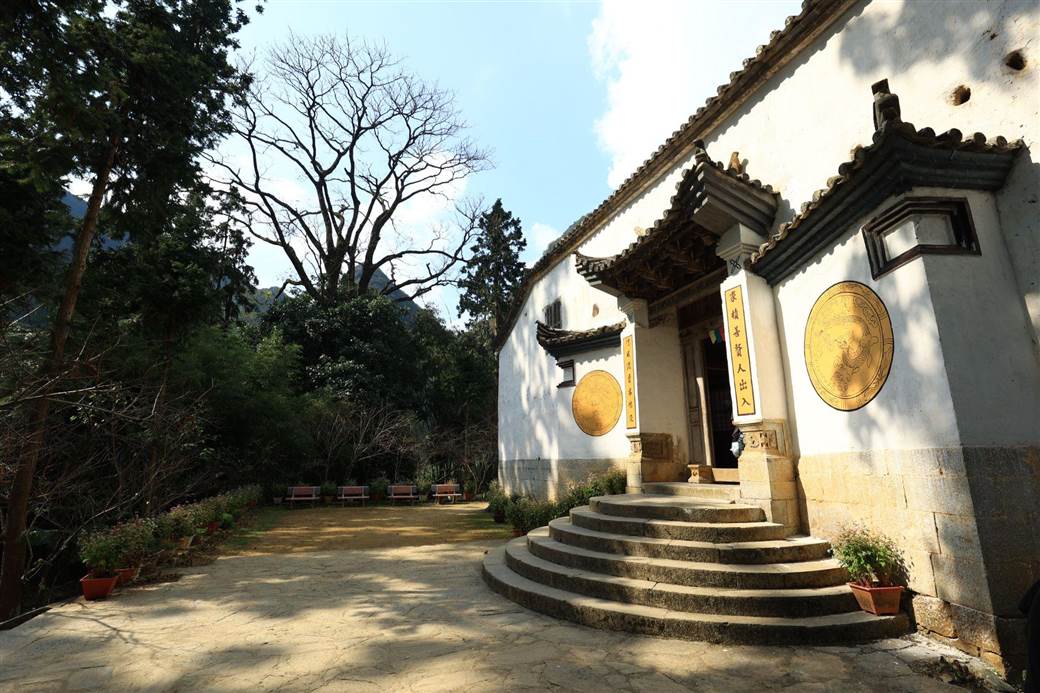
Ha Giang weather in October: climate, best time to visit & tips
3. Layout and Structure
The Vuong Family Mansion’s impressive layout reveals careful planning that balanced practical needs with symbolic meaning. Covering over 1,120 square meters and consisting of 64 rooms arranged in a harmonious pattern, the complex functioned as both a family residence and a center of regional power. The design demonstrates the sophisticated understanding of space and proportion that guided its creation.
From above, the mansion’s outline forms the Chinese character “王” (wang), meaning “king” a deliberate architectural statement about the family’s status. This layout divides the complex into three main sections: the front block for receiving guests and conducting business, the central block for family gatherings and ceremonies, and the rear block for private family quarters. Each section served specific functions while maintaining the overall symbolic significance.
The mansion’s two-story structure combines stone foundations with wooden upper levels, creating a sense of solidity and permanence while allowing for intricate decorative elements. Thick walls and strategic window placement helped regulate temperature throughout the year, demonstrating the builders’ understanding of the region’s variable climate. This thoughtful design ensured comfort through Ha Giang’s hot summers and cold winters.
3.1 The “Wang” Character Shape
The mansion’s layout as the Chinese character for “king” was no accident but a deliberate architectural statement. This shape creates three distinct horizontal wings connected by a central vertical axis, forming a unified whole that nevertheless maintains clear separation between public and private spaces. The shape would have been immediately recognizable to educated visitors, silently communicating the family’s aspirations and self-conception.
The front horizontal wing housed reception rooms, offices, and spaces for conducting business and receiving visitors. The central horizontal wing contained ceremonial halls, ancestral worship spaces, and rooms for family gatherings. The rear horizontal wing provided private family quarters, including separate areas for different family members according to their status.
The vertical axis connecting these wings served as the mansion’s ceremonial spine, with the most important spaces located along this line. This arrangement followed Chinese imperial design principles, where spatial hierarchy reflected social hierarchy. The mansion’s layout thus physically embodied the family’s understanding of proper social order and their place within it.
3.2 Defensive Walls and Entrances
Security considerations heavily influenced the mansion’s design, reflecting the sometimes turbulent political situation in this border region. A formidable stone wall surrounds the entire complex, standing 2.5 meters high and nearly a meter thick in places. This substantial barrier provided both physical protection and psychological reassurance in uncertain times.
The main entrance features massive wooden doors reinforced with iron, capable of withstanding significant force. These doors open onto a small courtyard rather than directly into the mansion, creating a transitional space where visitors could be assessed before gaining further access. Secondary entrances, less obvious and more easily defended, provided alternative access points for family members and trusted associates.
Watch towers at the corners of the compound offered views of approaching visitors and potential threats. From these vantage points, guards could monitor all approaches to the mansion. Small openings in the exterior walls, reminiscent of defensive arrow loops in European castles, allowed defenders to observe and potentially fire upon attackers while remaining protected.
3.3 Notable Features (64 Rooms, Bunkers)
The mansion’s 64 rooms reflect the Chinese preference for numbers with auspicious associations. In Chinese numerology, 64 represents completion and perfection. Each room served specific functions, from formal reception halls to private bedrooms, kitchens, storage areas, and servants’ quarters. The precise arrangement created a self-contained world where the family could live, work, and socialize without leaving the complex if necessary.
One of the mansion’s most remarkable features is its underground bunker system, demonstrating the security concerns that shaped its design. These reinforced chambers beneath the main structure provided potential refuge during attacks or political instability. Connected by narrow passages to both the main building and concealed exits beyond the walls, these bunkers offered escape routes if the mansion itself became indefensible.
The mansion includes several specialized rooms that highlight the family’s lifestyle and concerns. A dedicated opium smoking room reflected their involvement in this trade. A treasury room with reinforced walls and hidden compartments protected valuable possessions. Special reception rooms for different categories of visitors allowed the family to maintain appropriate social distinctions while ensuring all guests were properly accommodated according to their status.
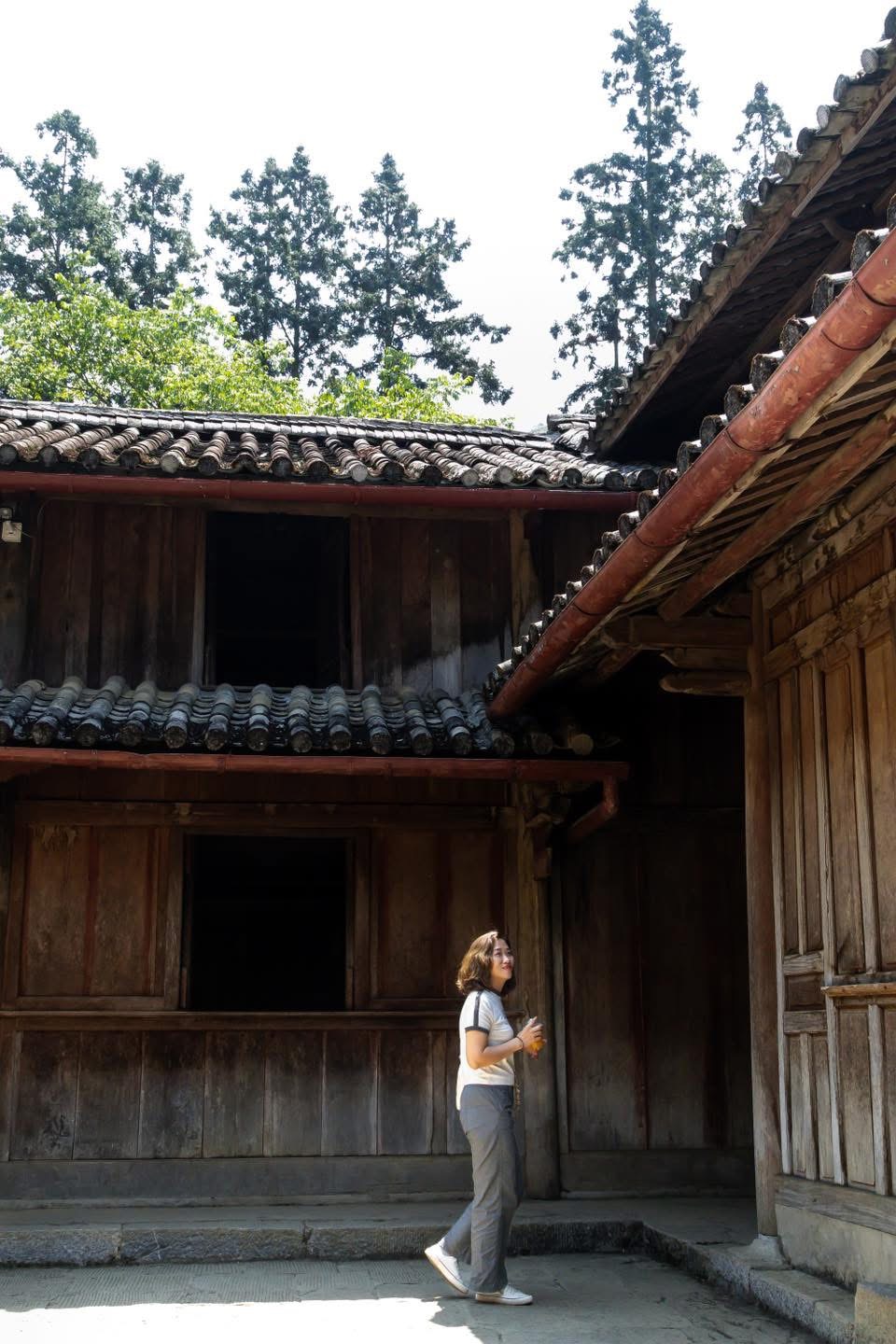
4. Role in Regional History
The Vuong Family Mansion served as more than a residence it functioned as a center of power that shaped regional politics, economy, and social structures during a transformative period in Vietnam’s history. From this remote mountain outpost, Vuong Chinh Duc and his family influenced events across the northern highlands while navigating the complex relationship between local ethnic communities and French colonial authorities.
During the early 20th century, Ha Giang represented a frontier zone where traditional governance systems were giving way to colonial administration. The Vuong family’s rise to prominence occurred within this context, as they positioned themselves as valuable intermediaries who could translate between different worlds. Their mansion physically embodied this intermediate position, combining elements from multiple cultural traditions into something new and distinctly their own.
The family’s control over opium production and trade routes gave them enormous economic leverage, which they translated into political authority recognized by both local communities and colonial administrators. Agricultural decisions, trade regulations, tax collection, and even some judicial matters fell under their purview. Within the mansion’s walls, decisions were made that affected thousands of people across the surrounding highlands.
4.1 The Vuong Family’s Political and Social Influence
Vuong Chinh Duc’s political acumen allowed him to establish a unique position within the colonial system. Appointed as a “tổng lý” (regional governor) by French authorities, he effectively ruled over much of Ha Giang while maintaining his identity as a Hmong leader. This dual role allowed him to protect certain aspects of local autonomy while working within the colonial structure.
The family’s influence extended through their extensive network of relationships with other prominent families in the region. Marriages often cemented political alliances, and the mansion frequently hosted gatherings where these connections were reinforced through ceremonies and celebrations. Their hospitality became legendary, with visitors from diverse backgrounds finding appropriate accommodation within the mansion’s hierarchical spaces.
Education represented another avenue of influence for the Vuong family. They established schools that combined traditional knowledge with new ideas and technologies introduced through colonial contact. By controlling access to education, they helped shape a new generation of local leaders who shared their understanding of how to navigate between tradition and modernity in changing times.
4.2 Stories from the Mansion’s Past
The mansion’s walls have witnessed countless events both grand and intimate. Local oral histories preserve stories of elaborate ceremonies when dignitaries visited, with the central courtyard transformed by lanterns, music, and traditional performances. These occasions demonstrated the family’s wealth and reinforced their position at the center of regional social networks.
During periods of unrest, the mansion served as a refuge for allied families and communities. Its defensive features weren’t merely symbolic they provided genuine protection during times when bandit groups or political rivals threatened stability in the region. The underground bunkers and secret passages reportedly proved useful during several such episodes, though details remain somewhat shrouded in mystery.
Perhaps the most poignant stories concern the mansion’s decline following political changes in the mid-20th century. As Vietnam’s revolutionary movement gained strength and colonial structures weakened, the Vuong family’s position became increasingly precarious. Family members describe difficult decisions about whether to remain or flee, what possessions to take or leave behind, and how to protect a legacy built over generations as the world that supported it was rapidly disappearing.
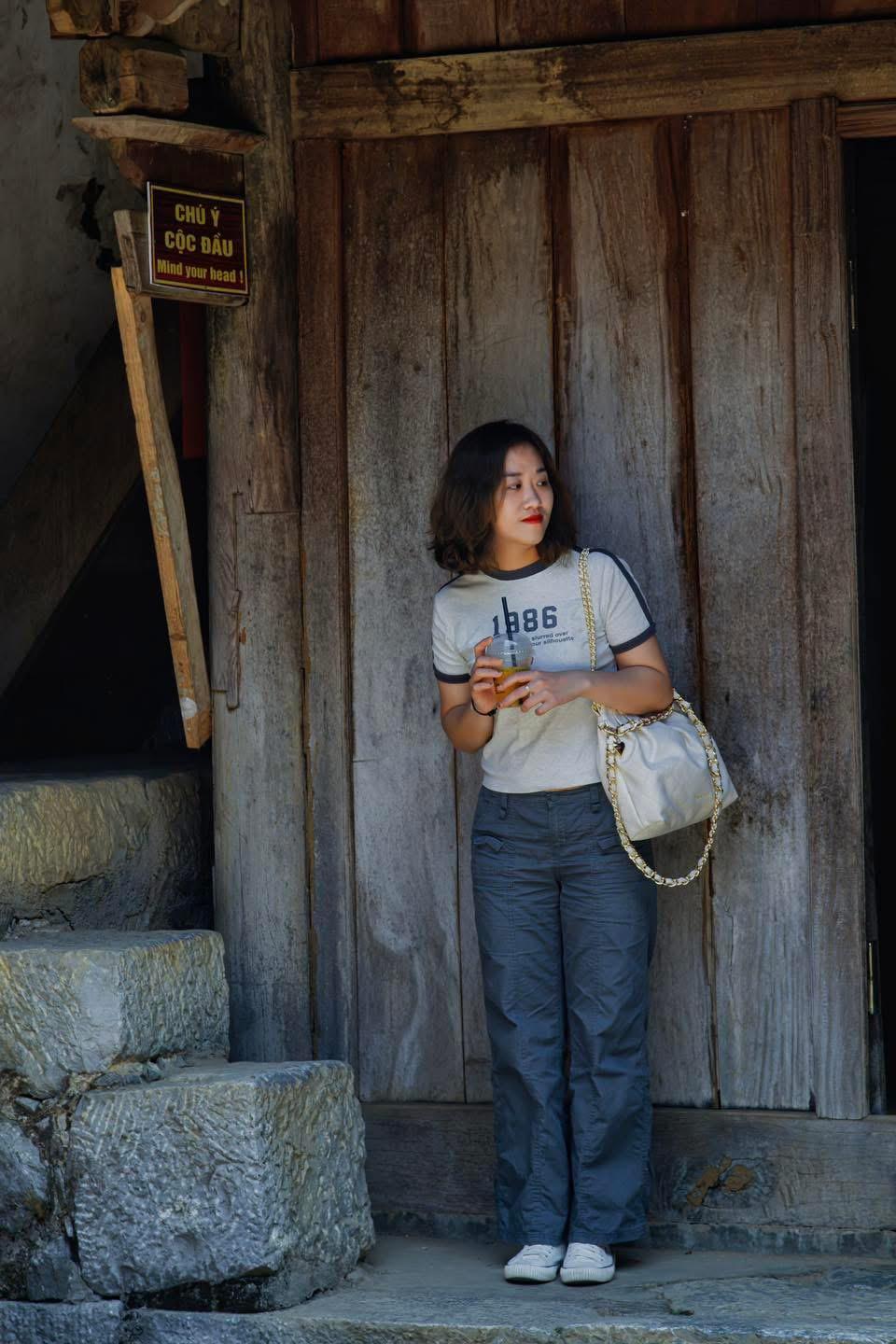
5. Current State and Visitor Experience
Today, the Vuong Family Mansion stands as one of northern Vietnam’s most significant historical sites, drawing visitors from around the world. Recognized as a National Cultural and Historical Relic in 1993, the mansion has been carefully preserved while being adapted for tourism. The Vietnamese government, recognizing its historical and cultural value, has invested in conservation efforts that maintain the site’s authenticity while making it accessible to modern visitors.
Upon arrival, visitors immediately sense the mansion’s grandeur and historical significance. The massive stone walls and impressive main gate create a powerful first impression, hinting at the wonders within. Though no longer a private residence, the mansion retains its dignity and presence, standing as a proud reminder of a fascinating chapter in Vietnam’s complex history.
The current visitor experience balances education with preservation. Guided tours provide historical context and architectural insights while ensuring the site’s protection. As tourism to Ha Giang increases, Phieu Travel has observed growing interest in the mansion as travelers seek deeper understanding of the region’s cultural and historical dimensions beyond its famous scenic landscapes.
5.1 Preserved Artifacts and Exhibits
Throughout the mansion, carefully curated exhibits display original furnishings, household items, and personal possessions of the Vuong family. These artifacts provide tangible connections to the people who once lived and worked within these walls. Period furniture arranged in traditional configurations helps visitors visualize how spaces functioned when the mansion was a bustling family residence and administrative center.
Particularly noteworthy are the preserved ceremonial items used for ancestor worship and important family celebrations. Intricate wooden tablets, ceremonial vessels, and decorative screens demonstrate the family’s commitment to traditional practices even as they embraced elements of modernization. These items reveal the complex cultural identity the Vuong family maintained as they navigated between different worlds.
Photographic displays throughout the mansion show the Vuong family members, important visitors, and significant events from the early 20th century. These images humanize the historical narrative, allowing visitors to see the actual people who inhabited these spaces. Accompanying text in Vietnamese and English provides context for understanding the family’s role in regional history and the social networks they cultivated.
5.2 Guided Tours and Accessibility
Professional guides, many from local ethnic communities with personal connections to the mansion’s history, lead visitors through the complex. These guides offer insights that go beyond basic historical facts, sharing local perspectives and oral histories passed down through generations. Their personal connections to the site add depth and authenticity to the visitor experience.
Tours typically last 60-90 minutes, covering the mansion’s architectural highlights, historical significance, and cultural context. Guides point out easily missed details like symbolic carvings, clever architectural solutions, and hidden defensive features that reveal the builders’ ingenuity. The narrative encompasses both the mansion’s grandeur and the sometimes complicated legacy of the family’s wealth and power.
Regarding accessibility, improvements have been made to accommodate diverse visitors while respecting the historical integrity of the site. The main pathway from the entrance has been leveled to facilitate easier access, though some interior areas remain challenging for visitors with mobility limitations due to preservation requirements. Multilingual information panels complement guided tours, ensuring visitors with different language backgrounds can fully appreciate the site.
5.3 Tips for Tourists
Visitors will have the most rewarding experience by allocating at least two hours for exploring the mansion and its surroundings. Morning visits often provide the best lighting for photography and typically feature smaller crowds compared to afternoon peak times. The quality of light as it filters through the mansion’s wooden screens creates particularly beautiful effects during early morning hours.
Comfortable walking shoes are essential, as the tour involves numerous steps and uneven historical surfaces. Weather in Ha Giang can change quickly, so bringing layers is advisable even on seemingly clear days. A light rain jacket can prove useful during the summer monsoon season when short showers are common.
Consider combining your visit with other nearby attractions to maximize your time in this remote region. The Sunday market in Dong Van offers a vibrant glimpse into local life, while the spectacular Ma Pi Leng Pass provides some of Vietnam’s most breathtaking mountain scenery. Phieu Travel can arrange comprehensive itineraries that include the mansion as part of a broader exploration of Ha Giang’s natural and cultural highlights.
6. Cultural Legacy and Preservation
The Vuong Family Mansion stands as more than a historical curiosity it represents a tangible link to a complex period in Vietnam’s past when different cultures, political systems, and economic models intersected in fascinating ways. As interest in Vietnam’s ethnic diversity grows, the mansion provides an important reference point for understanding how different communities have interacted, adapted, and preserved their identities through changing circumstances.
For the Hmong community specifically, the mansion holds special significance as a symbol of their historical presence and contribution to the region. Though the Vuong family’s position was in some ways exceptional, their story illustrates broader themes of Hmong resilience, adaptability, and cultural pride. Today, many Hmong guides and cultural interpreters at the site take particular pride in sharing this aspect of their heritage with visitors.
Beyond its architectural and historical value, the mansion contributes to contemporary discussions about cultural preservation in an era of rapid development. As Vietnam modernizes, sites like the Vuong Family Mansion demonstrate how historical preservation can complement economic development through cultural tourism. The challenge remains balancing increased visitor access with the need to protect the site’s physical integrity and cultural authenticity for future generations.
6.1 Restoration Efforts
Significant restoration work has been undertaken to preserve the mansion while maintaining its historical authenticity. These efforts began in earnest after the site’s designation as a National Cultural and Historical Relic in 1993 and have continued through several phases. Conservation experts have carefully documented original construction techniques and materials to ensure restoration work remains true to the builders’ intentions.
Wooden elements have required particular attention due to the region’s humidity and seasonal temperature variations. Skilled craftspeople, many using traditional methods passed down through generations, have repaired and replaced damaged beams, pillars, and decorative carvings. Where possible, original materials have been preserved; when replacement became necessary, historically appropriate alternatives were carefully selected.
The stone foundation and walls have proven more durable but still required maintenance to address issues like water infiltration and structural settling. Engineers have implemented subtle reinforcements that strengthen the structure without altering its historical appearance. These interventions ensure the mansion can safely accommodate thousands of visitors annually while maintaining its structural integrity for decades to come.
6.2 Mansion’s Status as National Monument
The mansion’s designation as a National Cultural and Historical Relic in 1993 marked official recognition of its exceptional value to Vietnam’s cultural heritage. This status provides legal protection while establishing standards for preservation and public access. The designation also facilitated funding for research, documentation, and restoration projects that have enhanced understanding of the site’s historical significance.
Beyond official recognition, the mansion has become a symbol of regional identity for Ha Giang Province. Local authorities highlight it in tourism promotion materials, educational programs, and cultural events. This prominence helps sustain public interest in the site’s preservation while contributing to broader awareness of Ha Giang’s unique cultural landscape and historical importance.
As Vietnam continues developing its cultural heritage management systems, the Vuong Family Mansion serves as an important case study in successful preservation. The site demonstrates how historical structures can be maintained as living educational resources rather than static monuments. This approach creates opportunities for meaningful engagement with history while supporting local economic development through responsible tourism initiatives like those offered by Phieu Travel.
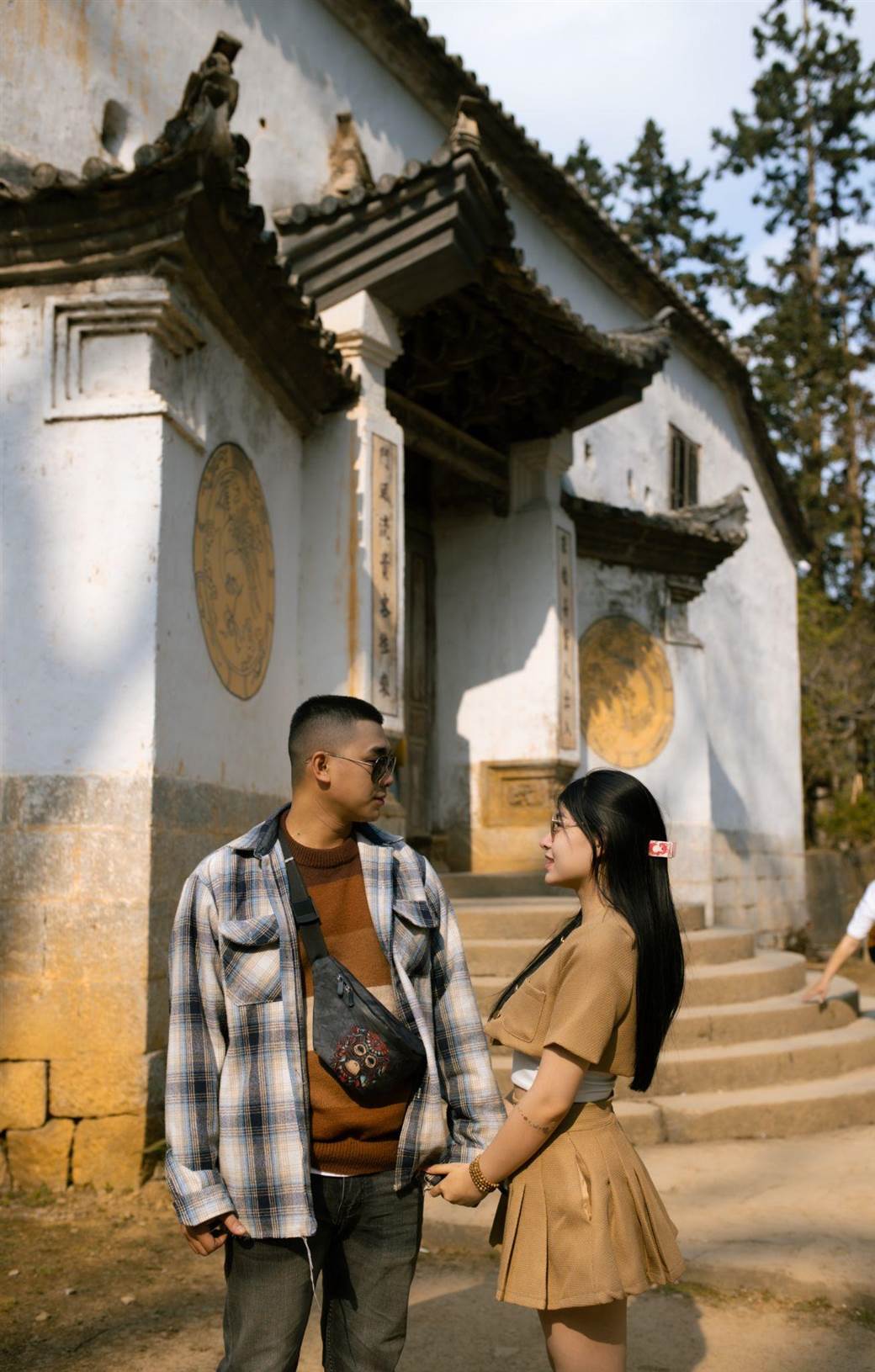
6.3 Visiting the Vuong Family Mansion with Phieu Travel
The Vuong Family Mansion stands as a highlight on any journey through Vietnam’s northern highlands. As specialists in authentic travel experiences, Phieu Travel includes this remarkable site in several Ha Giang itineraries, providing expert guidance and cultural context that enhances visitor appreciation. Our local guides offer insights that connect the mansion’s story to broader themes in Vietnamese history and contemporary ethnic identity.
Typically, visits to the mansion are incorporated into multi-day Ha Giang Loop adventures, where dramatic mountain landscapes complement cultural discoveries. These carefully crafted journeys balance iconic destinations with lesser-known sites, creating a comprehensive understanding of this fascinating region. Transportation, accommodations, and local interactions are thoughtfully arranged to ensure comfort while maintaining authentic connections to local communities.
For travelers seeking deeper engagement with northern Vietnam’s ethnic diversity and complex history, the Vuong Family Mansion provides an unparalleled window into the past. Through its architectural beauty, cultural significance, and the fascinating stories it contains, this remarkable structure continues to captivate visitors just as it impressed guests a century ago. Experience the wonder of the Vuong Family Mansion and the breathtaking Ha Giang region with expert guidance from Phieutravel.com, where unforgettable journeys through Vietnam’s most spectacular landscapes await.
Read more:
- Ha Giang Loop Safety Tips: How to Ride Securely in Vietnam’s Northern Mountains
- The Ultimate Guide to the M-Shaped Curve on Ha Giang Loop
- Beyond the Beaten Path: Discovering Ha Giang Province in Northeast Vietnam

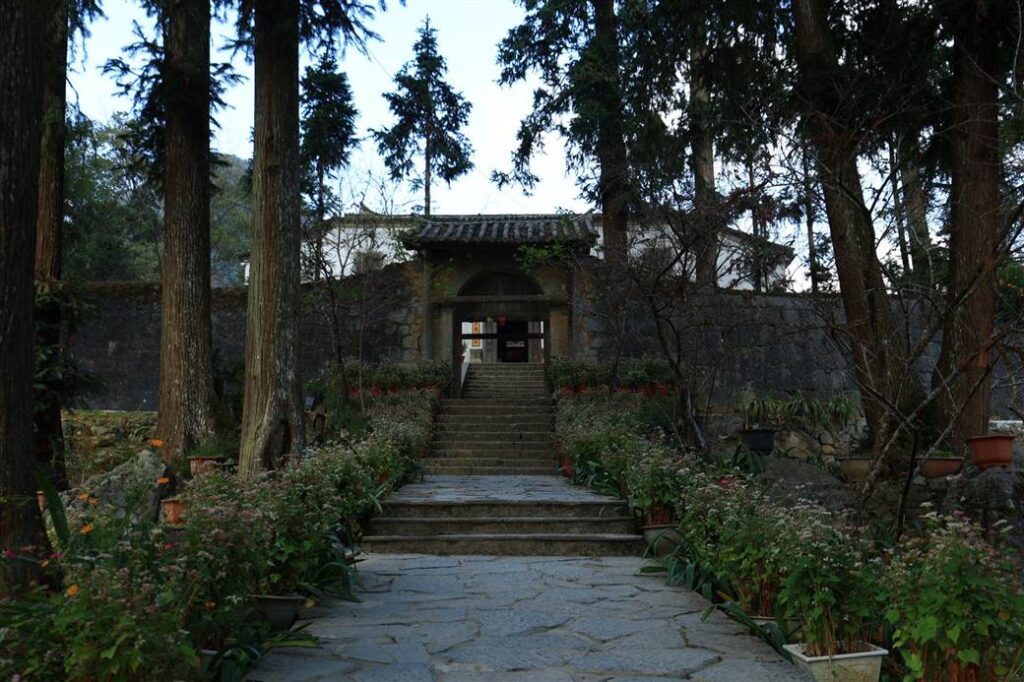
You Might Also Like
Ha Giang Weather in September: Complete Guide for Travelers
Exploring the magnificent Ha Giang Loop in September offers travelers a perfect balance of favorable[...]
Quan Ba Twin Mountains: Ha Giang’s Iconic Fairy Hills and Complete Travel Guide
The mystical Quan Ba Twin Mountains rise from the emerald valleys of Ha Giang like[...]
Vuong family mansion: the architectural marvel and cultural legacy of Ha Giang
Deep in Vietnam’s northern highlands, where mist-shrouded mountains meet terraced rice fields, stands a testament[...]
Ha Giang Loop Safety Tips: How to Ride Securely in Vietnam’s Northern Mountains
The Ha Giang Loop, with its winding mountain roads and breathtaking landscapes, offers one of[...]
The Ultimate Guide to the M-Shaped Curve on Ha Giang Loop
Vietnam’s remote northern province of Ha Giang hides a natural wonder that has captivated adventurous[...]
Most Beautiful Places to Visit in Vietnam: Essential Destinations and Insider Tips
Vietnam captivates travelers with its stunning landscapes, rich cultural heritage, and warm hospitality. From mist-shrouded[...]
Beyond the Beaten Path: Discovering Ha Giang Province in Northeast Vietnam
Ha Giang Province in Northeast Vietnam stands as one of the country’s last frontiers for[...]
Rainy season in Ha Giang: what to expect, when to go, and travel tips
Vietnam’s northern frontier reveals a different face during the rainy season, transforming Ha Giang’s limestone[...]